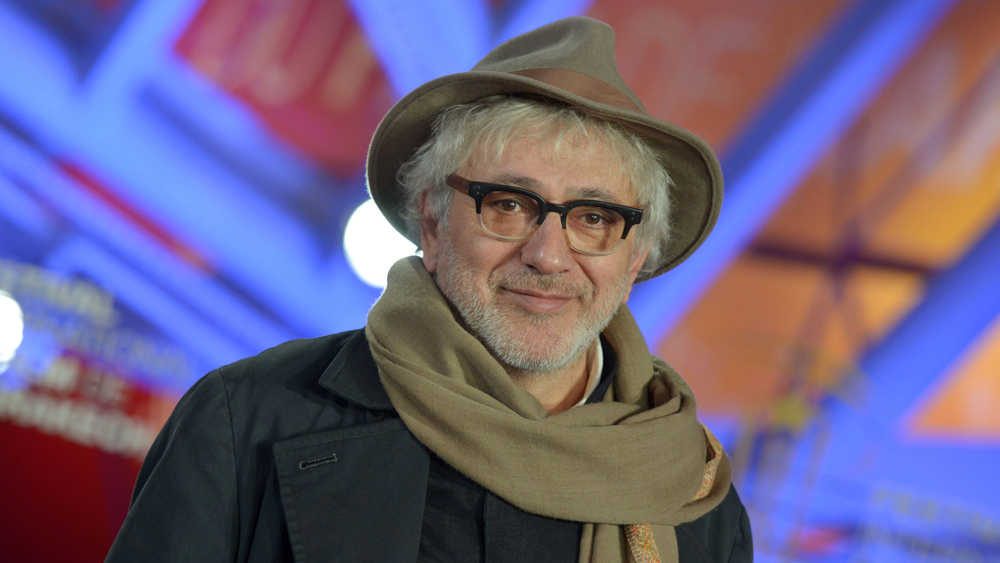In John Krasinski’s brilliantly suspenseful thriller, a family must remain silent at all times to avoid the giant predators roaming their post-apocalyptic world A Quiet Place
If ever a film had me mentally tiptoeing over a booby-trapped carpet of eggshells while silently gibbering with anxiety, it’s this brutal sci-fi suspense thriller, written by horror specialists Scott Beck and Bryan Woods and directed by John Krasinski, who developed the screenplay with them and stars – alongside Emily Blunt. It’s set in a postapocalyptic wasteland. But this isn’t a young adult drama, it’s a prematurely old adult drama, a world in which innocence, childhood and happiness have been blowtorched off the face of the Earth.

Shh … Noah Jupe, Millicent Simmonds and John Krasinski in A Quiet Place. Photograph: Jonny Cournoyer/AP
Krasinski and Blunt play Lee and Evelyn, a couple who now run an efficient Trappist-survivalist smallholding in the countryside, while making regular forays into the devastated town for supplies. We get the time-honoured scenes in the ruined supermarket, and that weird frisson of seeing stuff that you could just take if you wanted, but who cares now that consumerist law and order has utterly broken down? One of their kids wants to take a toy model of the space shuttle Challenger (poignantly yearning for a rocket to take them all away from this ruined planet) but Lee fixes him with a bayonet gaze of disapproval, while grabbing this unexploded noise-bomb and silently removing the batteries. That thing’s too dangerous.
Their son, Marcus (Noah Jupe), and daughter, Regan (Millicent Simmonds), are well drilled in the new soundless, wordless discipline and the point is that Regan is hearing impaired, so the whole family has already had to learn sign language to communicate. Lee has even got his soldering iron out and tinkered with adapting a new hearing aid for her. It is Regan’s disability that has enabled the family to cope – an elegant narrative contrivance from Beck and Woods. Yet, as the story continues, there is a new challenge. Evelyn is pregnant, and now the adults must wonder how she is going to have the baby without modern anaesthetic and without making a sound. A world of horror is on the way.
A Quiet Place allows you to worry at a strange thought: might it be possible to live life entirely safely and even normally in this situation, if you could somehow mentally train yourself, or evolve over a few generations, to do without sound? Might this be a workable, natural mode of existence? Could you internalise the fear and remain silent to avoid the predators in the way that you might naturally change your habits in some locales to avoid bears or snakes?
Lee and Evelyn’s family have developed a habit of joining hands before they eat their meals. Perhaps this was what they used to do before saying grace, or perhaps they have started doing it now. In fact, there are certain circumstances in which they are allowed to make a moderate amount of sound, and they have war-gamed out certain situations in which the production of sound might help them in an all-out confrontation with the beasts.
But the point is that suppressing noise makes them yearn for it, not simply as a kind of human expression but an entirely rational howl of rage or horror or despair at what is happening. The movie shows that suicide-by-scream is an open-ended possibility.
In its simplicity and punch, this is a film that feels as if it could have been made decades ago, in the classic age of Planet of the Apes or The Omega Man. It is a cracking back-to-basics thriller that does not depend too much on what these creatures look like. Krasinski rather cleverly addresses this issue by keeping them glimpsed only subliminally at first, but then, without giving any clearer idea of what they look like, we graduate to a surreally extreme close-up of the beast’s hideous, undulating ear. A satanically sensitive orifice.







Leave A Comment
You must be logged in to post a comment.